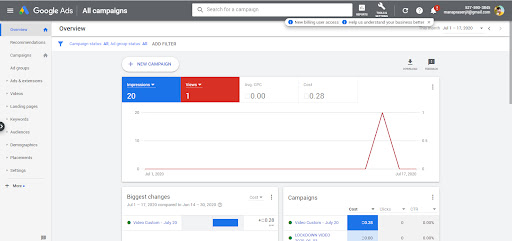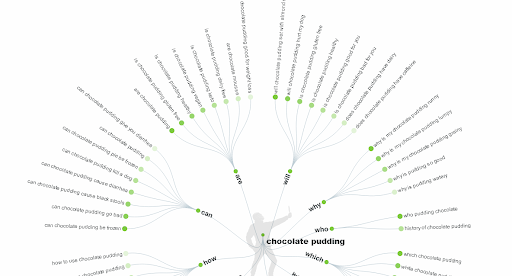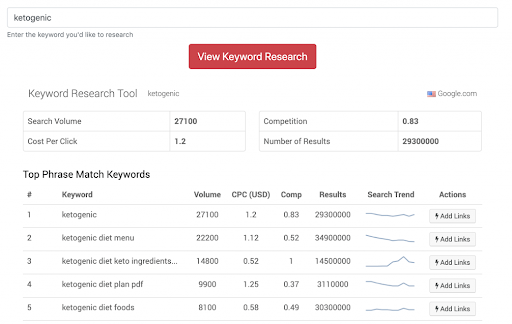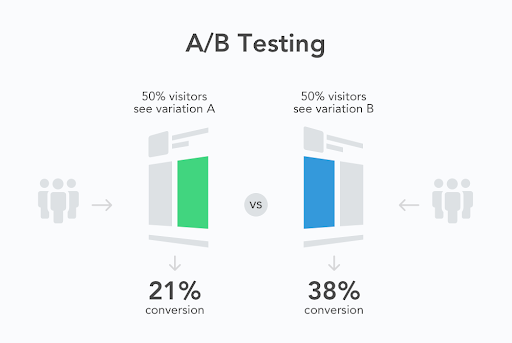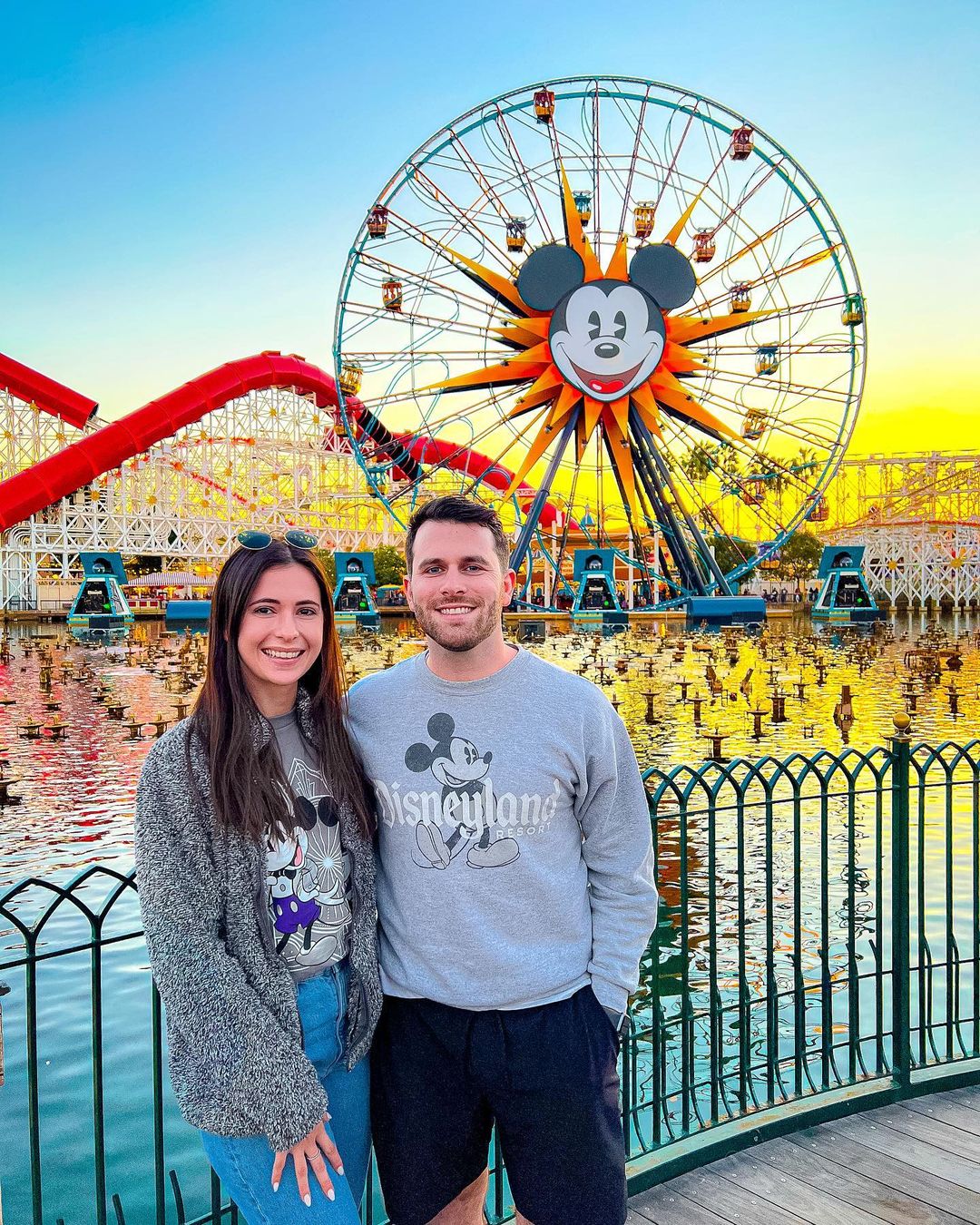Google has made online advertising exceptionally affordable. The millions of websites that are a part of the Google Display Network, YouTube and Google Ads ecosystem are based on simple-to-understand protocols.
The tech giant from Mountain View, California, made it possible for small business owners to go after customers energetically without a million-dollar advertising budget, and that is an exceptional achievement. The market has rewarded it handsomely, with $150 billion or 80% of Alphabet’s income arising from online ads.
Though the process is easy, i.e. you can launch a Google Ad campaign in a matter of a few hours, success in utilizing it is not that easy.
Here is our brief guide to improving your returns from Google Ads.
9 Tips to Improve Your Google Ads ROI
Google Ads is not a static platform. Every year there are more changes being introduced as Google refines the process.
Many business owners have to hire a PPC expert to be up to date with their Google Ad campaigns.
Here is how to keep on generating high returns with your Google Ad campaign.
1. Have a clear objective
The biggest element of a marketing exercise is to develop clarity and focus. That is never possible unless there are specifics – Who, What, Where, When, and Why of a campaign.
Do you want to grow sales or is your aim to spread the word about your brand?
Is getting a new email address a conversion or is it a sale?
A non-specific campaign would go nowhere.
If you need to both grow your brand and increase sales, it is best to do one first and then the other. Marketing objectives can rarely piggyback on the same campaign.
It is equally crucial to set out the Google Ads KPIs at this time. What will you be measuring? A lot of metrics are available and which one’s count as a success—a conversion, a sale, more traffic, etc.
2. Create campaigns that resonate
The Google Ad is the beginning of the process. The task is to draw the customer down the funnel.
Your landing page must be well constructed, otherwise, the customer would probably spend a minute or three and bounce away.
Spend as much time on designing the landing page as you did with keywords.
Make sure that CTA is inserted in the right place and that there is no scope for misleading the customer.
Engage the customer and offer reliable solutions to satisfy the search intent.
3. Allocate to mobile
The digital world has shifted from a static desktop thanks to the penetration of smartphones.
The majority of searches happen from mobile as customers out and about need an immediate solution to their queries.
You have to keep this change in mind and make your ad and landing page mobile friendly.
Invest in keywords and bid for the mobile search market. You are bound to get a lot more traffic and conversions.
4. Optimized keyword selection
Most Google Ad campaign managers take the easy way out. They do not spend a lot of time on keyword research.
At the most, they use Hoth and some suggestions from Google Keyword Planner.
That is not enough. Detailed research from advanced tools such as SEMrush and Ahrefs is necessary.
Which keywords have been trending and which are high competition are low-hanging fruits.
Low-cost keywords are the secret sauce, and they are not easy to discover. Offbeat tools such as Answer The Public help you create a keyword list that is unmatchable.
The team needs to find high-value keywords that have medium competition.
A balance is needed to attract quality traffic that converts.
Keep on experimenting and changing keywords every few weeks. Sooner or later you will find a combination that is affordable yet yields above-par results.
5. Choose negative keywords
Negative keywords are a wonderful addition to Google search. They prevent traffic created due to ambiguous search terms.
Such as “where can I find glasses” can include both eyeglasses and drinking glasses. If you are an eyeglass maker, you can cross out drinking glass as a negative keyword.
You can add negative keywords to Google in your Google Ads account without it costing a penny.
When you use this feature correctly you not only save money but also receive better quality traffic.
Remember, you pay for each click, and a wrong click here and another there adds up to a tidy sum besides causing a high bounce rate.
6. Perform A/B testing
A/B testing is an integral part of digital marketing.
You can’t have an idea of what works unless it is compared to something else. The two given alternatives are possibilities A and B and thus the name.
Run an ad campaign for a week with one set of keywords and then with another.
Switch landing pages around. Include different CTA and color combinations.
Compare each set of results with those from before and decide the best course.
The key factor is to test one thing at a time. If you change keywords and landing pages, it is difficult to gauge which had the greater impact.
7. Conversion tracking
Conversion tracking is built inside Google Ads. It lets you see which customers are performing the intended purpose e.g. sign up for a newsletter or buy a product.
When you switch keywords every week, it is conversion tracking that lets you know which set of keywords is giving the maximum effect.
You can also get interesting insights such as keywords that lead to the greatest number of clicks and the average period spent on a website.
Creating a successful campaign takes time and experience. Conversion tracking data helps to make sense of the complexities.
8. Update and tweak
Unlike traditional marketing where you create a commercial and let the local tv station air it before the 9 PM news for the next quarter, a digital marketing campaign is dynamic.
You can easily run one set of keywords to target 25-40 year olds and another to target 40-65 year olds.
It is equally easy to provide a different landing page for these two age groups.
Given this immense flexibility, you need to constantly change the ad campaign. Perhaps major editing is not required but small tweaks here and there.
Keep up the research with keywords since one set might fall out of favor and new ones might enter the fray.
9. Use remarketing
Have you ever searched for shoes and then seen ad after ad about shoes pop up everywhere you visited on the internet? It seems mere chance, but is actually by design. The technique is known as remarketing.
Google has significant remarketing prowess.
Once a customer has shown an interest in your product, Google can show repeated ads for it across websites and YouTube.
Using remarketing you can now display ads to customers across the internet long after they have bounced away from your website.
Google remarketing ads allow you to reach out easily to prior visitors, offer them some incentive, and get them to convert.
Last Words
Look everywhere for inspiration to refine your Google Ads campaign.
A review of “People Also Ask” and the search suggestions at the bottom of the Google page are a valuable source of long tail keywords. It’s a great shortcut because, after all, Google suggested them.
There is more than one way to refine every marketing campaign.
You need to regularly immerse yourself into the fundamentals of your campaign to devise better ways of reaching out to customers.

